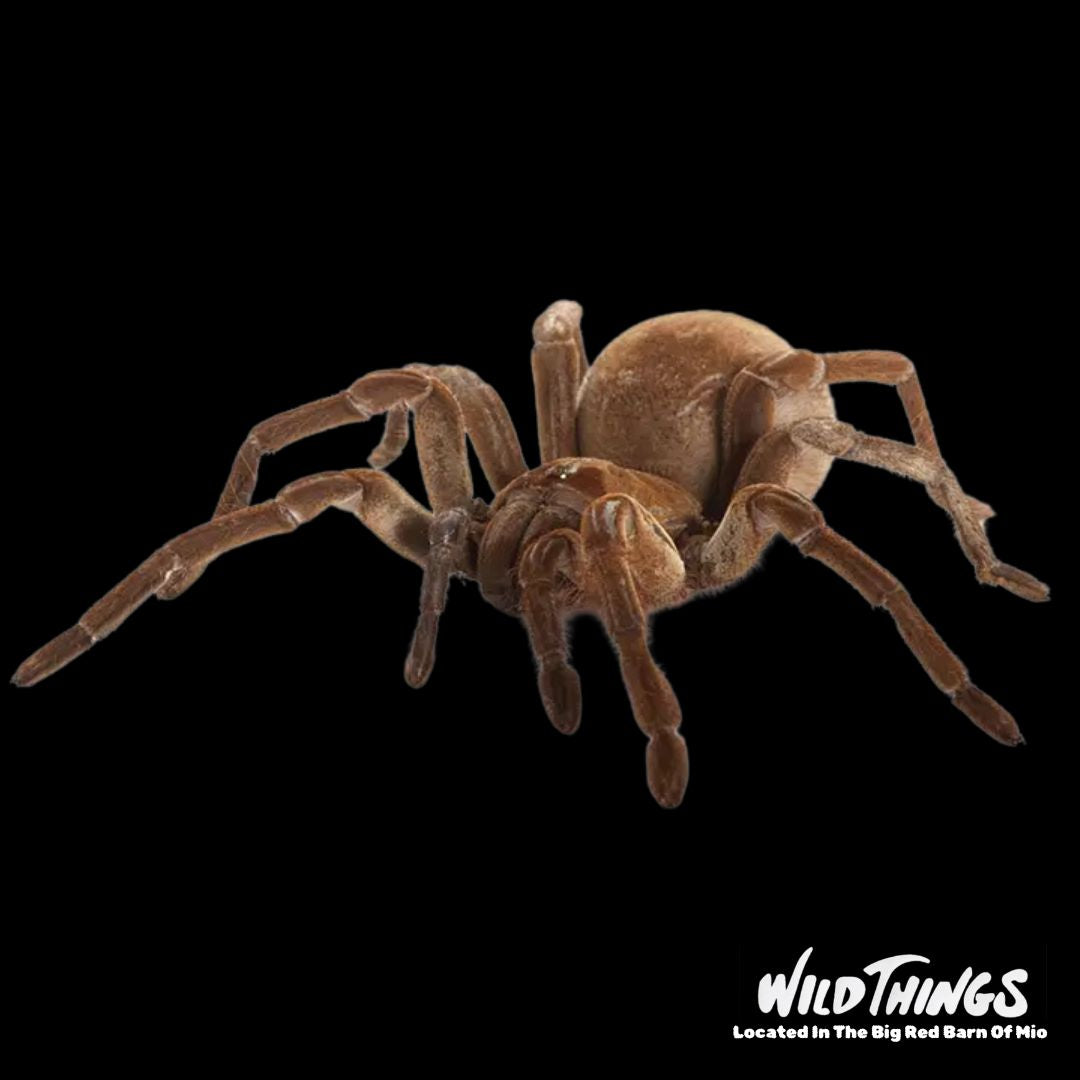AuSable River Outdoors
Goliath Bird Eating Tarantula
Goliath Bird Eating Tarantula
Couldn't load pickup availability
Species: Goliath Bird Eating Tarantula
Scientific Name: Theraphosa blondi
Origin: The Goliath bird eater is native to the upland rainforest areas of northern South America, such as Suriname, Guyana, French Guinea, and parts of Brazil and Venezuela.
Lifespan: The females have a lifespan upwards of 25 years in captivity, while the males' average lifespan is between 3 and 6 years.
Size: 10 - 11 inches
Enclosure Type: Plastic enclosures allow for easier modification, but many opt for low-lying glass enclosures for their own viewing pleasure.
Enclosure Size: As an adult, an enclosure with the dimensions like a 20-gallon long aquarium is adequate
Substrate: This species will burrow when given the correct amount of substrate. A mix of about 4 or more inches of organic soil, coco fiber and peat moss can help keep your bird eater happy.
Décor: A half-buried piece of cork bark or wood can start the entrance of a burrow and also help reduce your spider's stress.
Water: A water dish for your Goliath bird eater is also vital. Placing it in a corner where it can be overfilled and away from where your tarantula has made its personal home is the best decision. Your pet will also drink from it, so keep it clean and free of debris.
Temperature: A temperature between 75 and 84 degrees Fahrenheit is fine for this species, and minor fluctuations will not harm your tarantula. These can all be monitored with the proper equipment, such as hygrometers and thermostats.
Humidity: 80 – 85%
Lighting: Like all other tarantulas, goliath bird eater doesn’t require additional lighting. They are nocturnal. It is OK to have 8-12 hours of ambient lighting. Keep them away from direct sunlight. If you want to use display lighting so that you can observe your tarantula better, use red LED light.
Type Of Diet: Carnivorous
Types Of Food: Dubia roaches, live crickets, mealworms and smaller vertebrates like mice, lizards and other reptiles
Feeding Schedule: Wait 3–7 days after a molt before feeding, ensuring that the tarantula’s fangs are solid black, and its exoskeleton is fully hardened. Feed every 2–3 weeks (or as needed). Offer 4–5 large crickets or one large Dubia roach.
Supplements: No supplements are needed for your tarantula.
Share

